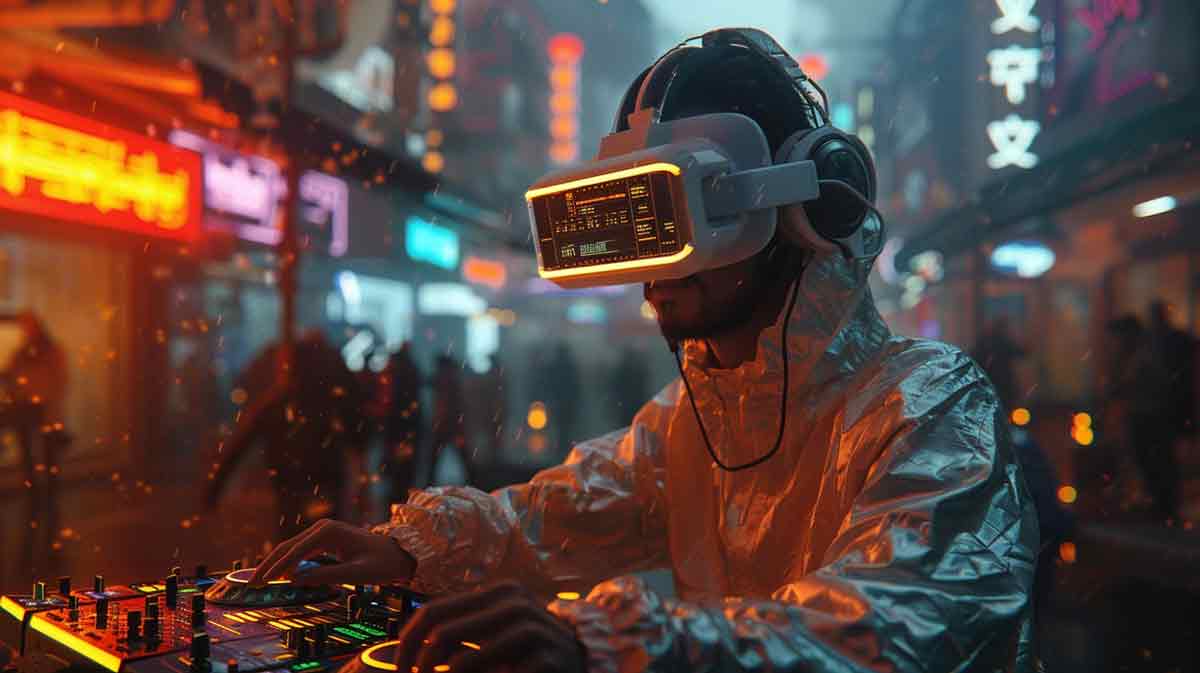What is AR/VR Development? An Introduction to the Technology
In a world where technology continuously reshapes our perception of reality, Augmented Reality (AR) and Virtual Reality (VR) stand at the forefront of this transformative wave. These technologies not only alter how we interact with our environment but also open doors to unprecedented experiences that blend the digital with the tangible. As we delve into the realm of AR/VR development, we uncover the intricate processes and innovative techniques that bring these immersive experiences to life.

Key Concepts in AR/VR Development You Need to Know
AR and VR, though often mentioned in tandem, diverge in their approach to enhancing reality. AR overlays digital elements onto the real world, enriching our perception with interactive layers of information. Think of apps that project furniture into your living room or games like Pokémon GO that populate your surroundings with virtual creatures. Conversely, VR transports users to entirely virtual environments, immersing them in worlds crafted purely by digital means. With VR headsets, one can explore distant planets, walk through historical reconstructions, or simply escape into fantastical realms.
The Tools of the Trade: Essential Software and Hardware
Creating AR/VR experiences demands a suite of sophisticated tools. Developers rely on powerful engines like Unity and Unreal Engine, which provide the robust frameworks needed for rendering realistic and responsive environments. These engines support a variety of platforms, ensuring versatility in development.
On the hardware front, VR requires high-fidelity headsets such as the Oculus Rift, HTC Vive, or PlayStation VR, coupled with motion controllers to track user movements. AR, meanwhile, leverages the ubiquitous presence of smartphones and tablets, though dedicated AR glasses like Microsoft HoloLens and Magic Leap are pushing the boundaries of what’s possible.
Crafting Compelling Content: Design Principles and Best Practices
Designing for AR/VR necessitates a paradigm shift from traditional screen-based interfaces. For VR, the key is to create environments that are not only visually convincing but also interactive. Immersion hinges on the seamless integration of sight, sound, and touch. Developers must consider spatial audio, haptic feedback, and intuitive controls to maintain the illusion of reality.
AR development focuses on blending digital elements with the physical world without disrupting the user’s natural experience. This involves precise object tracking, contextual relevance, and user-friendly interfaces. Developers must pay close attention to lighting, shadows, and occlusion to ensure digital elements convincingly integrate with real-world environments.
Overcoming Development Challenges: Technical and Creative Hurdles
AR/VR development is fraught with challenges, both technical and creative. High-performance requirements are non-negotiable; rendering detailed environments at a consistent frame rate is essential to prevent motion sickness in VR and maintain realism in AR. This demands optimization techniques like level of detail (LOD) adjustments and efficient resource management.
Interactivity poses another significant hurdle. In VR, ensuring responsive and natural interactions requires sophisticated physics engines and real-time input processing. For AR, accurate environmental mapping and object recognition are paramount. Creative challenges include crafting narratives that take full advantage of immersive capabilities and designing experiences that are engaging yet accessible.
Real-World Applications: Beyond Gaming and Entertainment
While gaming and entertainment are the most visible applications of AR/VR, their potential extends far beyond. In healthcare, VR is revolutionizing training by providing realistic surgical simulations, while AR aids in complex procedures by overlaying critical information directly onto the surgeon’s field of view.
In education, these technologies offer immersive learning experiences, allowing students to explore ancient civilizations or conduct virtual chemistry experiments. Retail is also embracing AR, enabling customers to visualize products in their homes before purchase. In architecture and real estate, VR walkthroughs and AR visualizations are transforming how designs are conceptualized and presented.
The Importance of an Introduction to AR/VR Development for Beginners
The future of AR/VR promises to be as dynamic as its present. Advances in artificial intelligence and machine learning are set to enhance the interactivity and realism of these technologies. AI-driven characters and environments that adapt to user actions will create even more personalized and engaging experiences.
Moreover, improvements in hardware, such as lighter, more comfortable headsets and more advanced sensors, will make these technologies more accessible and practical. The integration of AR/VR with other emerging technologies, such as the Internet of Things (IoT) and 5G, will further expand their capabilities and applications.
Conclusion: Embracing the AR/VR Revolution
As AR and VR technologies continue to evolve, they offer limitless possibilities for transforming our interaction with the digital and physical worlds. For developers, this field represents a frontier of creative and technical exploration, where the only limits are those of imagination. By mastering the tools and overcoming the challenges of AR/VR development, we can create experiences that are not just immersive but truly transformative, redefining our perception of reality.
